10 Myths of Public Speaking
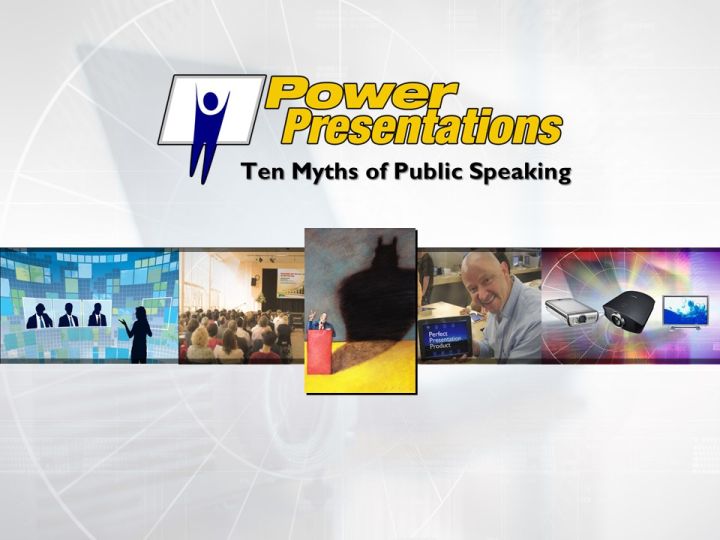
Strategies for improving your impact on your audience by delivering powerful presentations
1. Death By Embarrassment
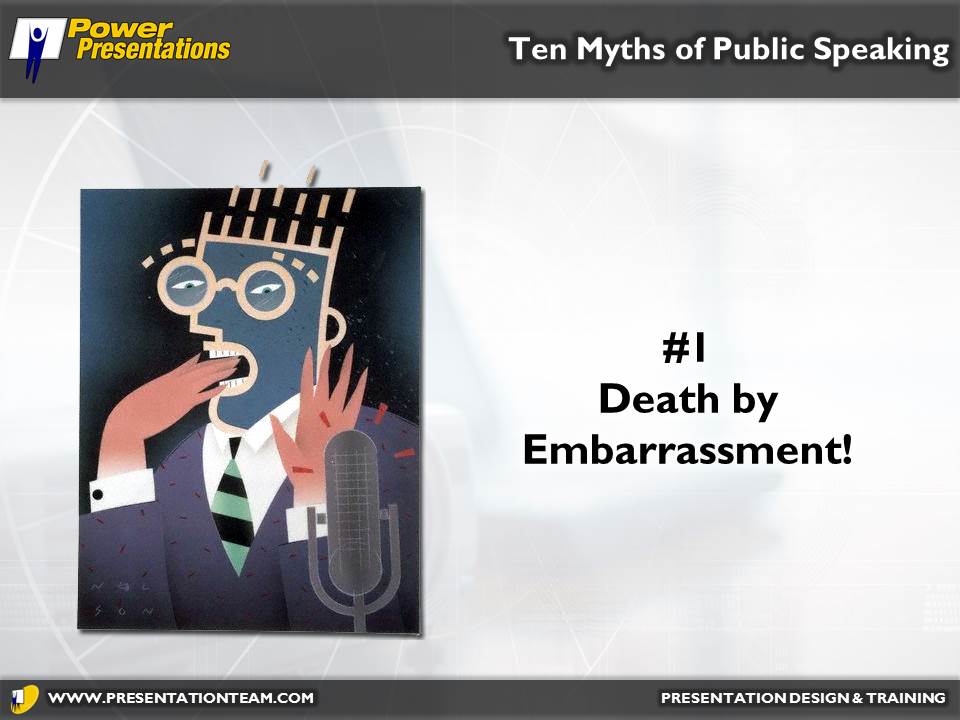
Of all the unproven collective ideas about Public Speaking, none is more commonly accepted than the belief that speaking in public causes death by embarrassment. Nothing can be further from the truth! It’s a myth. No coroner has ever been called upon to examine an embarrassed corpse at a lectern. Most people know intellectually that they won’t really die if they speak in front of a group, yet this irrational fear persists.
Here are 9 other myths that, if believed, can cripple the effectiveness of your public speaking style. Dismissing these myths will enable you to have a greater impact on your audience by delivering a more memorable, powerful presentation.
2. Introductions aren’t Important
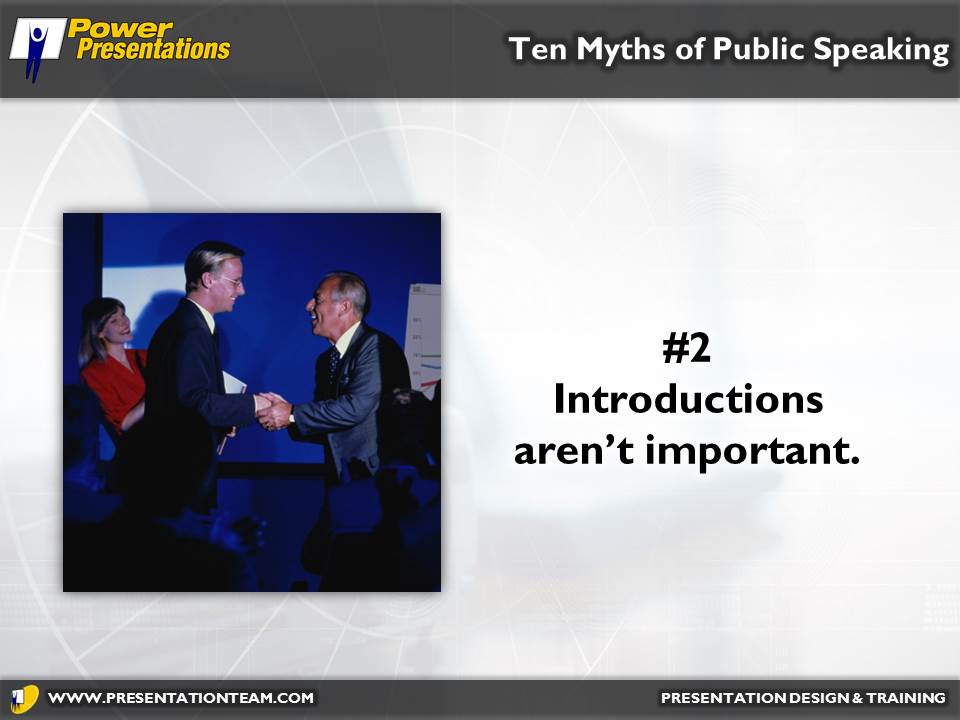
2. Introductions aren’t important.
Introductions are too critical to leave to chance. They prepare the audience for your message. Write your own introduction, and be sure the person who is introducing you pronounces your name correctly.
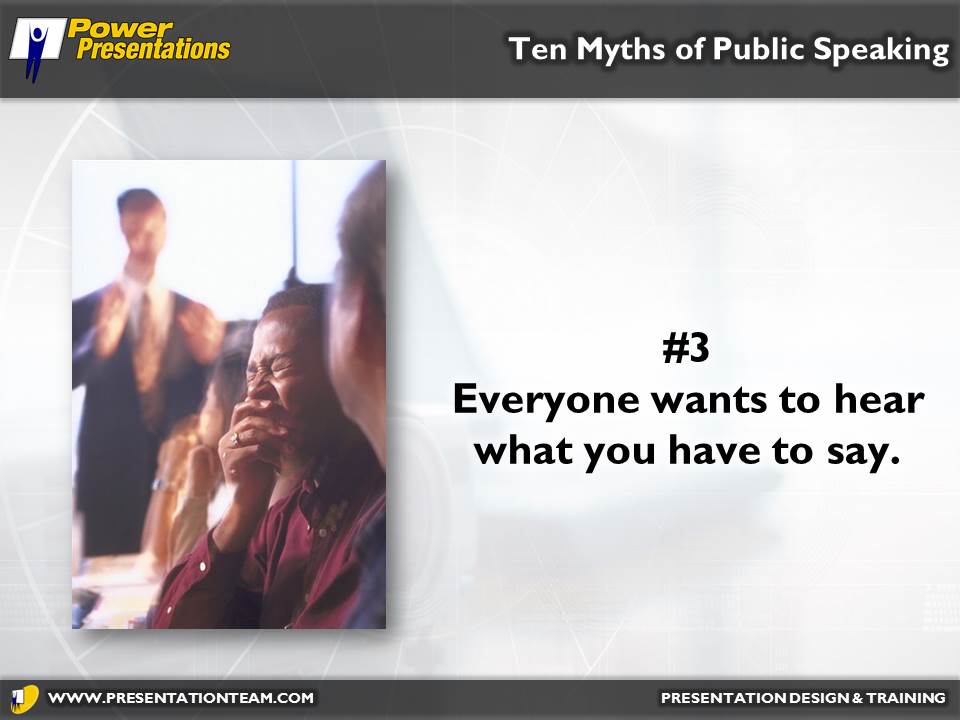
3. Everyone wants to hear what you have to say.
You know your message is important, but not everyone in your audience is there by choice. Some are there to fulfill an assignment. Many would rather be somewhere else. You need to give them a reason to stay and hear what you have to say.
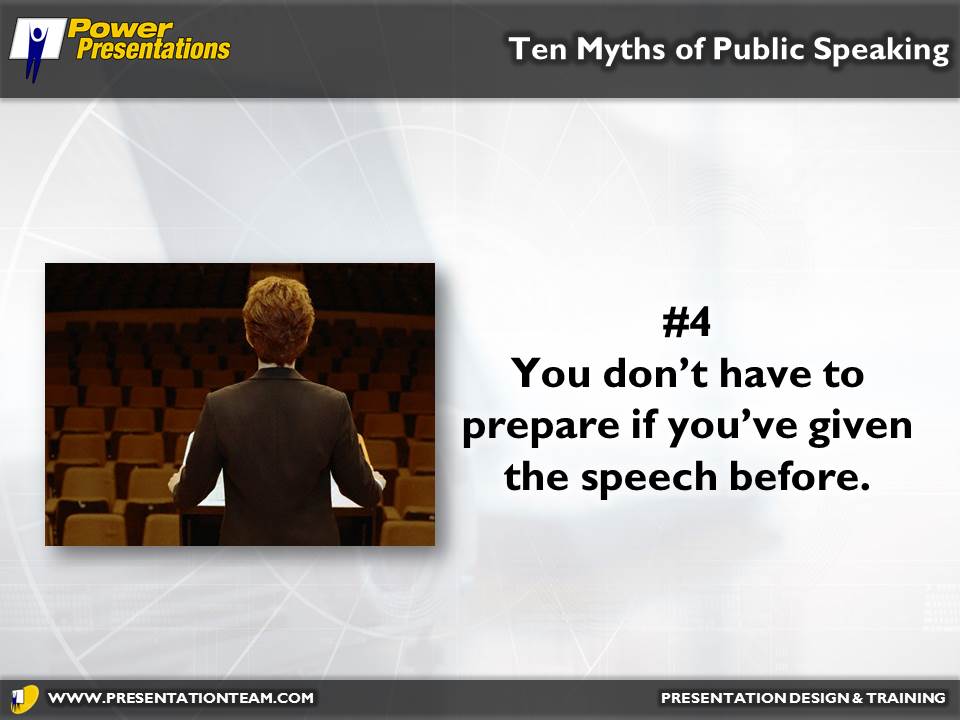
4. You don’t have to prepare if you’ve given the speech before.
No presentation is ever the same. Each audience is different. Review your notes, practice and refine your information. Over confidence can lead to a sloppy delivery.
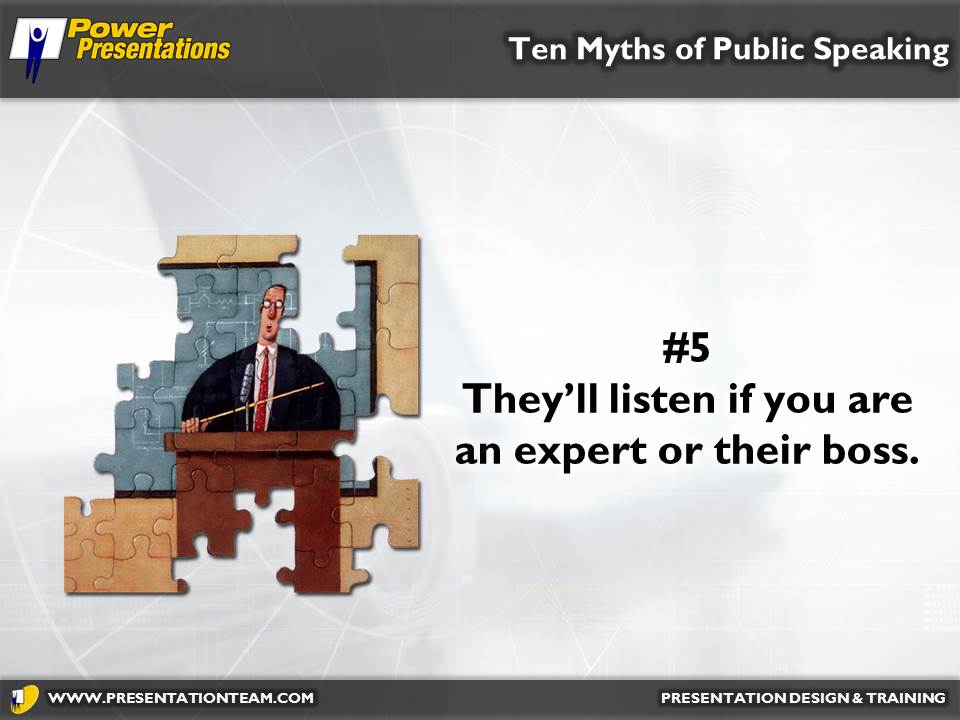
5. They’ll listen if you are an expert or their boss.
Probably they will…initially. But unless your style is interesting and your information meaningful, their attention will begin to drift within the first 15 minutes of your talk.
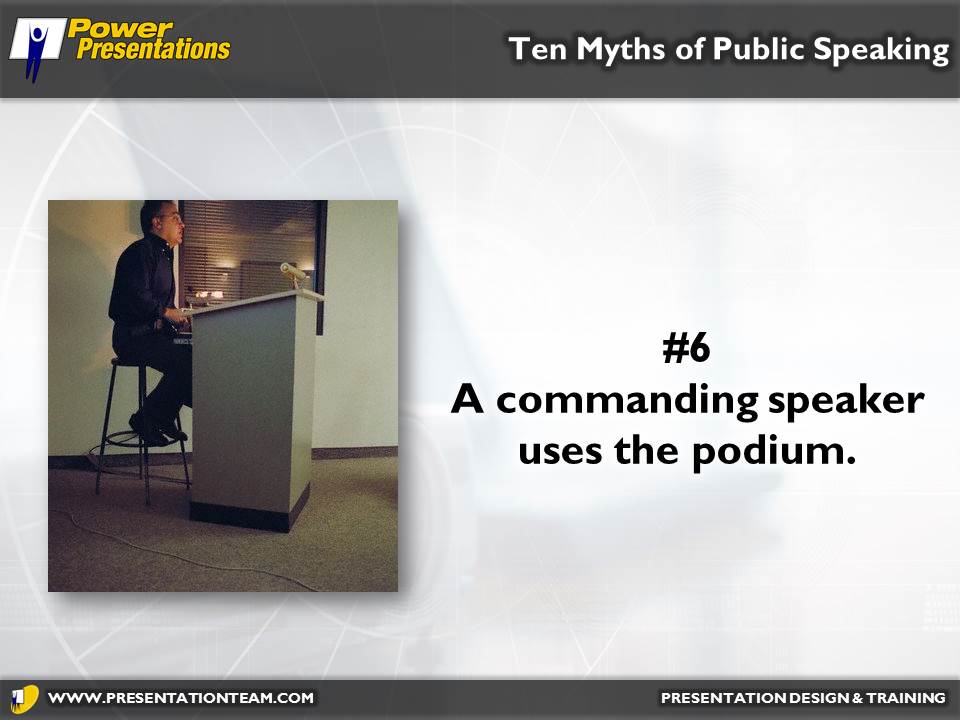
6. A commanding speaker uses the lectern.
You’ll have better rapport and interaction with the audience if there is nothing between them and you. The lectern can be a barrier. It causes you to rely on notes and blocks your gestures. Step out and connect!
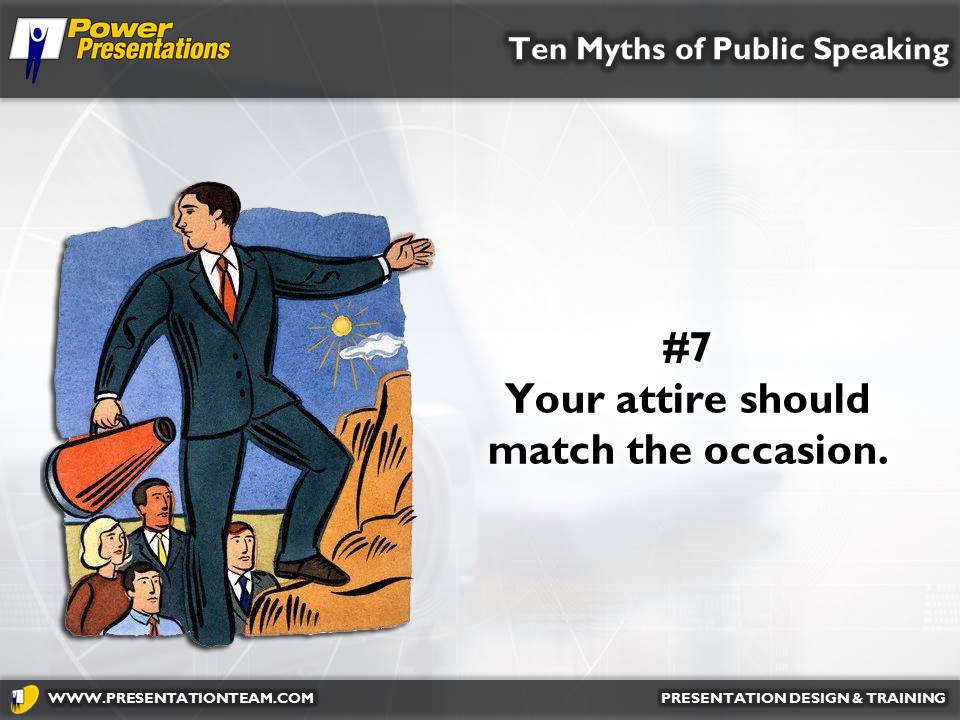
7. Your attire should match the occasion.
The speaker should always be dressed a bit more formally than the audience. The first impression is generally a visual one.
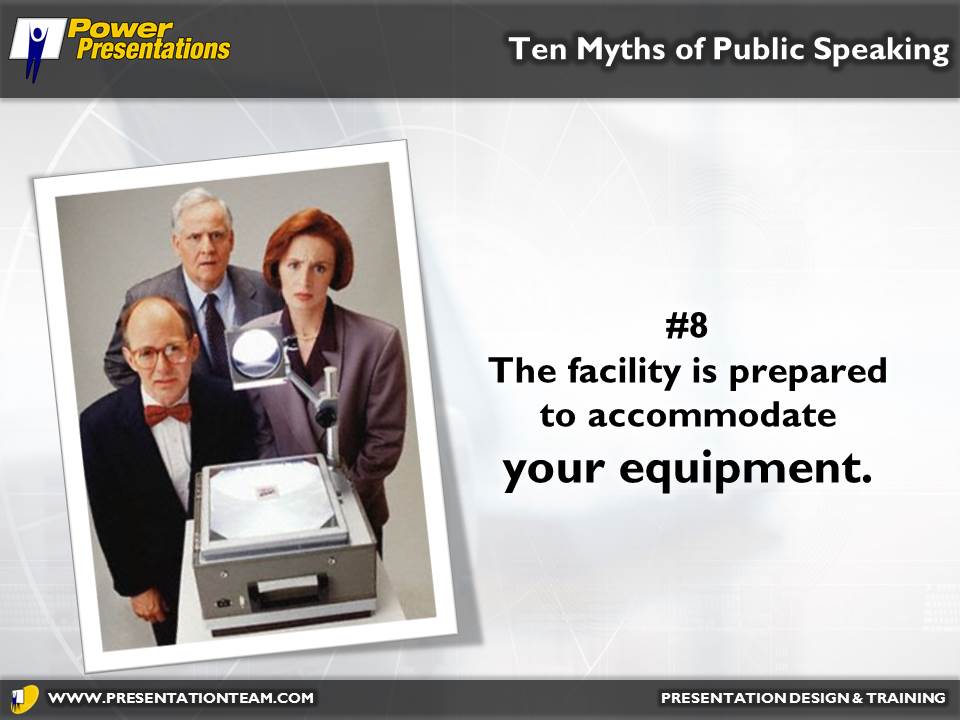
8. The facility is prepared to accommodate your equipment.
Don’t assume anything, and don’t leave anything to chance. Be prepared. Ask the staff. Check the equipment before you use it. Bring your own things and have back up discs, batteries, bulbs, electric cords, etc. Be prepared for the unexpected.
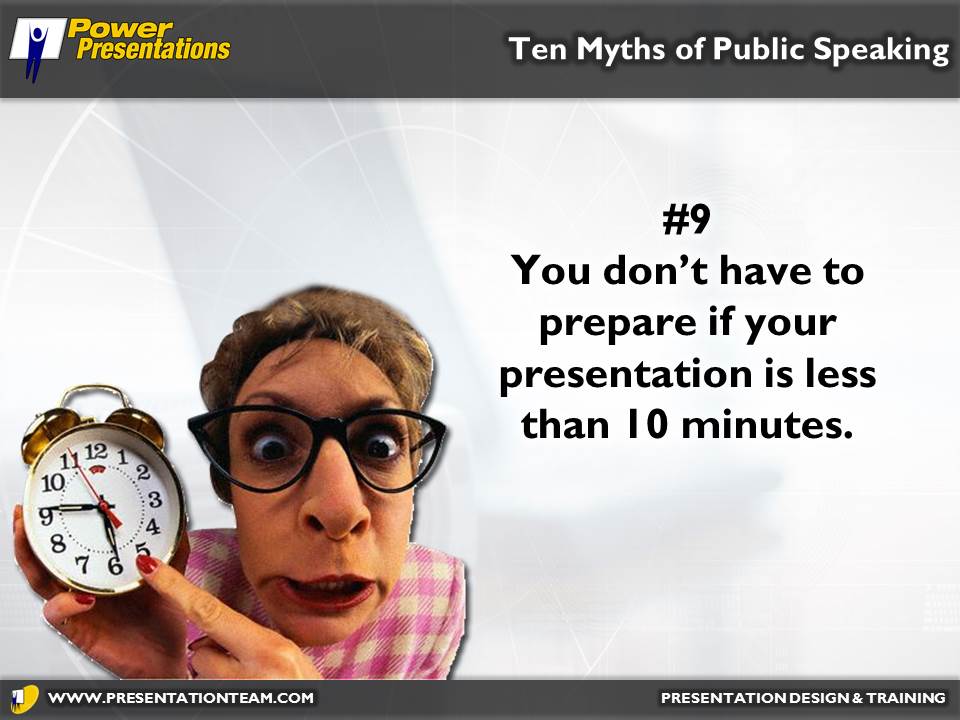
9. You don’t have to prepare if your presentation lasts less than 10 minutes.
The shorter the presentation the more preparation is needed. You don’t have the luxury of time with a short speech. Your message needs to be succinct, precise and clear.
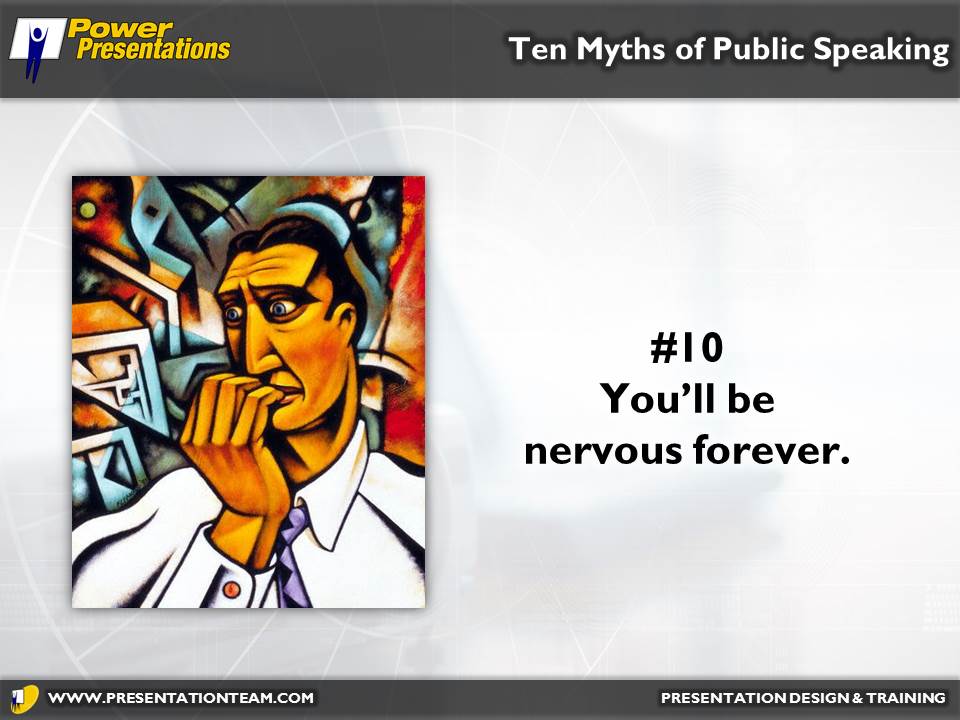
10. You’ll be nervous forever.
Nervousness usually goes away within the first few minutes of your presentation. This is especially true if you know your material and you are prepared. Perfect practice makes perfect. Things really do get easier!



























